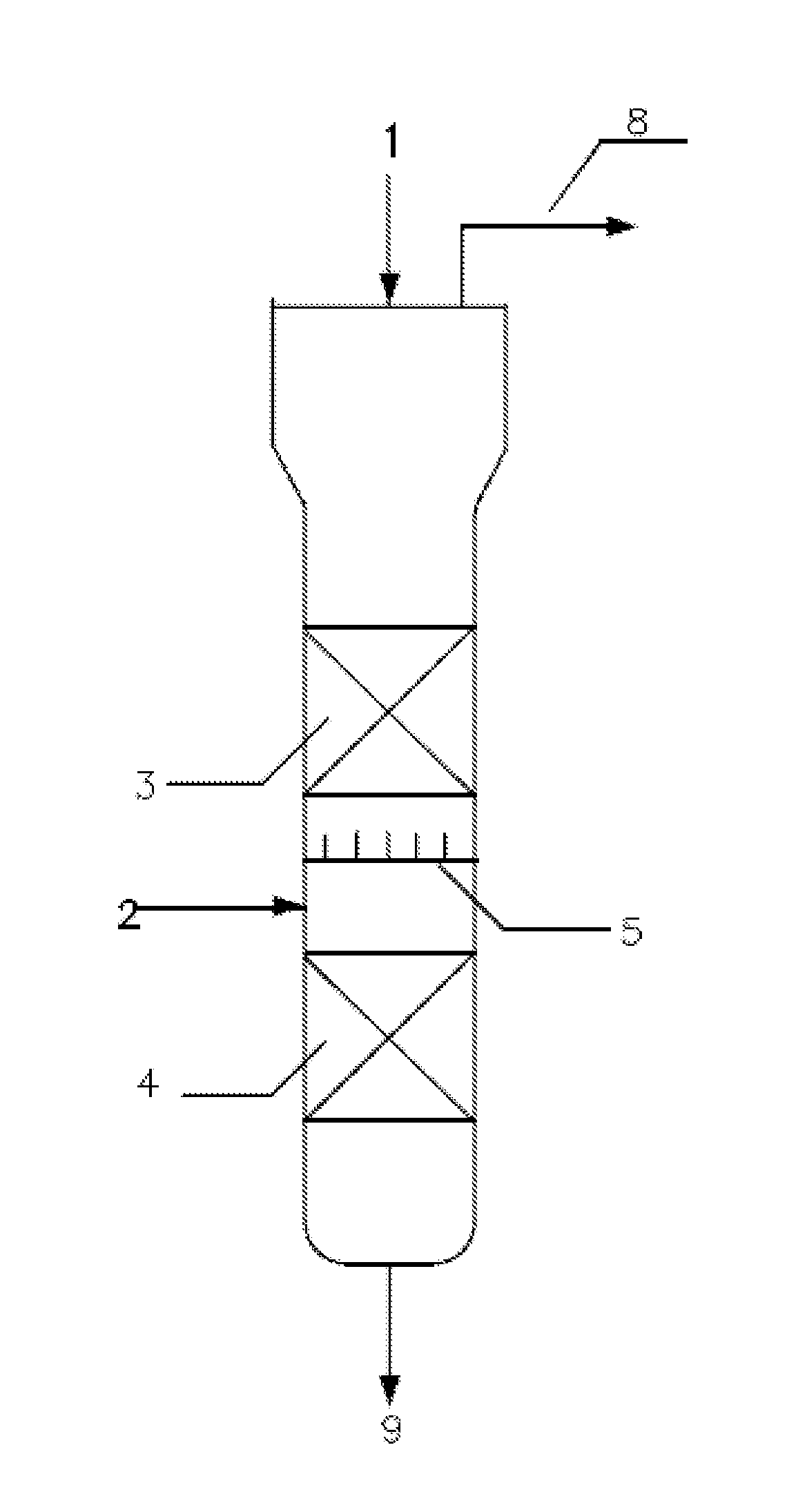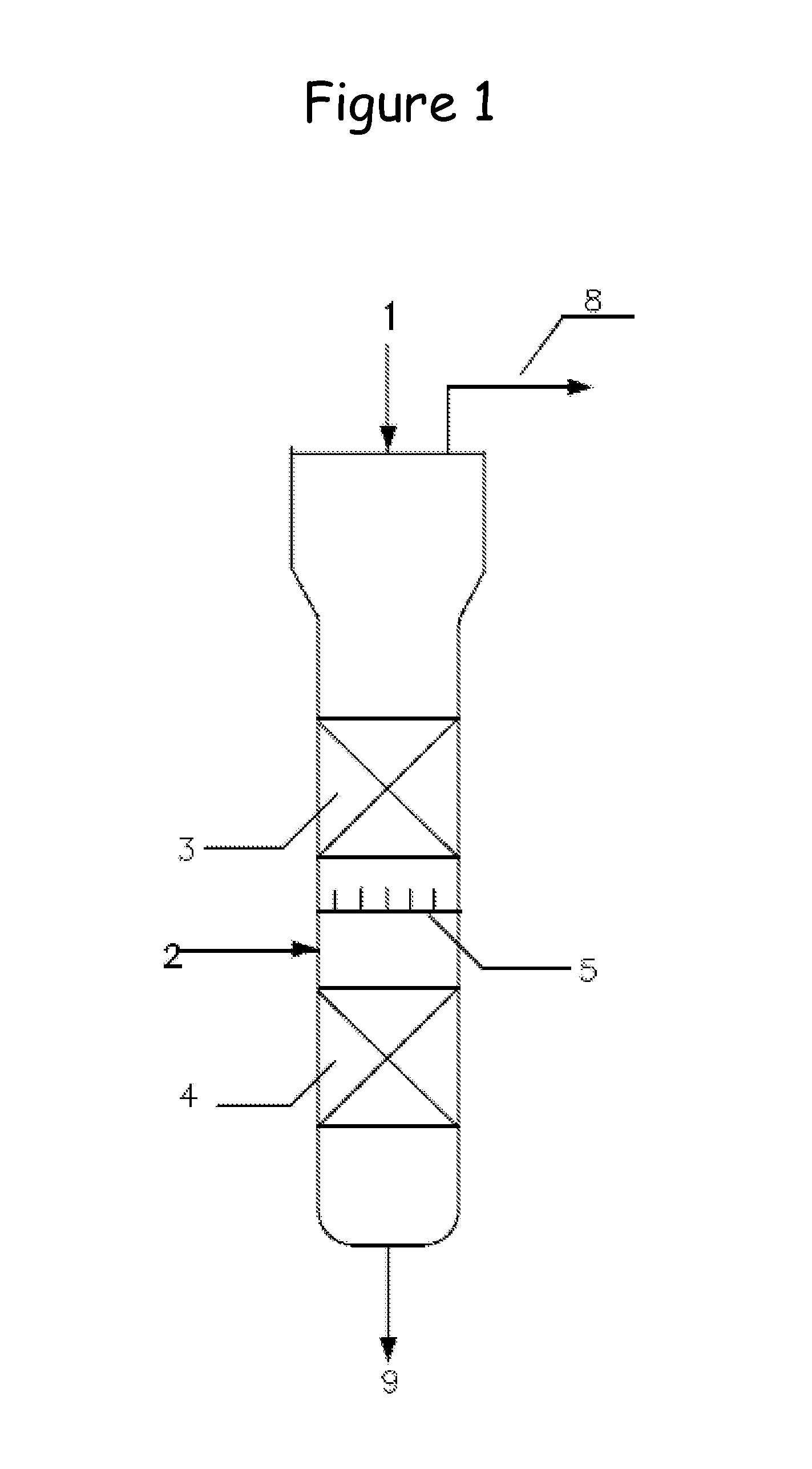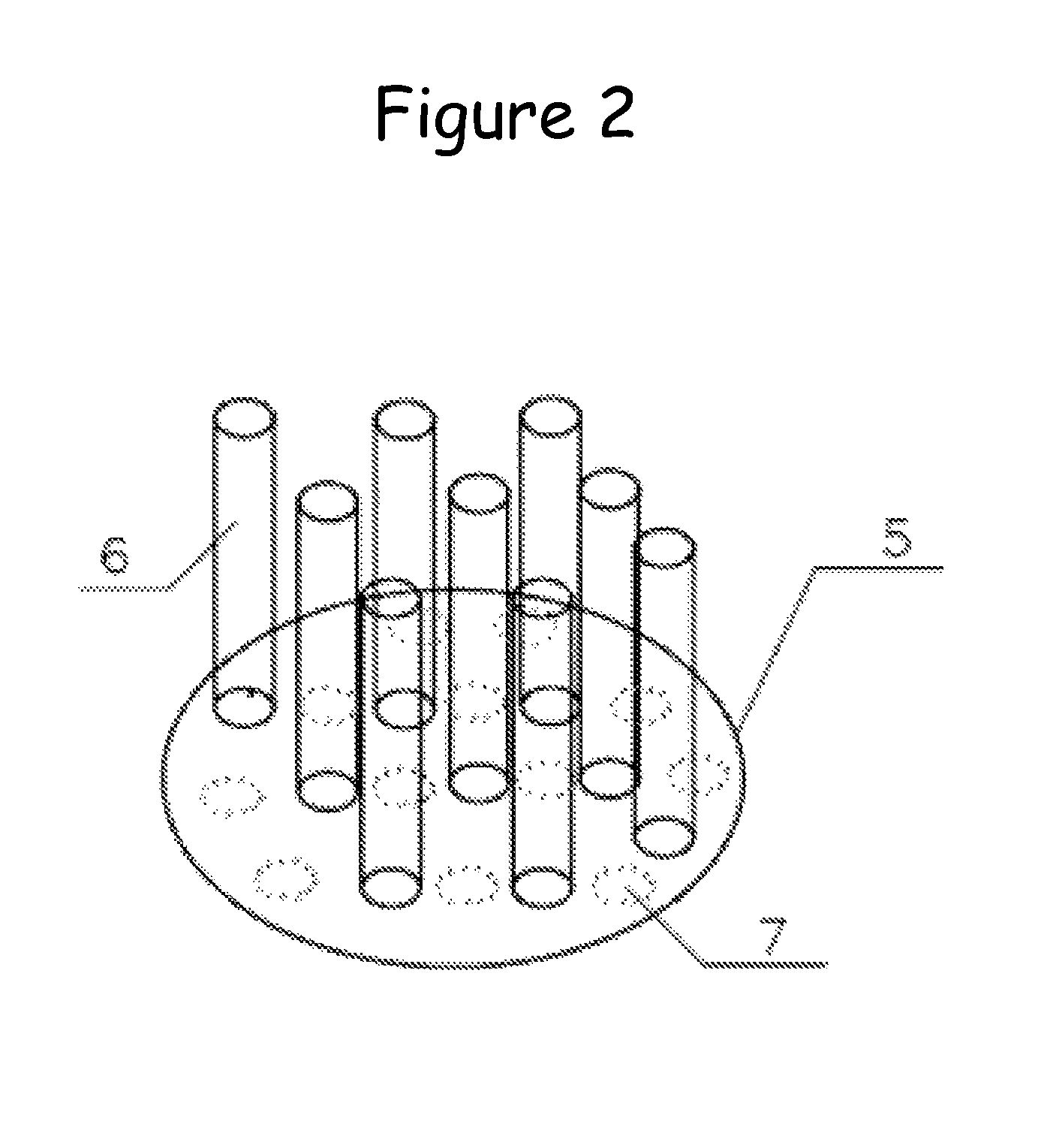Distillate two-phase hydrogenation reactor and hydrogenation method
a hydrogenation reactor and two-phase technology, applied in the direction of hydrocarbon oil treatment products, fuels, chemistry apparatus and processes, etc., can solve the problems of reducing the quantity of high-grade feedstock oil, reducing the hydrogenation efficiency, and high investment and operation costs of the circulating hydrogen compressor, so as to improve the hydrogenation efficiency and the applicability of raw materials
- Summary
- Abstract
- Description
- Claims
- Application Information
AI Technical Summary
Benefits of technology
Problems solved by technology
Method used
Image
Examples
example 1
[0033]The mixed diesel oil was sufficiently mixed with hydrogen gas for dissolving hydrogen, and then introduced into the hydrogenation reactor under the reaction conditions of the hydrogen partial pressure at 6.0 MPa, the reaction temperature at 311° C., and the amount of hydrogen gas supplemented among the catalyst beds being 1:1 in terms of hydrogen-oil volume ratio. A portion of the liquid-phase product passed through the circulation pump as the circulated oil, and was mixed with fresh raw material for dissolving hydrogen, and then introduced into the reactor, and another portion of the liquid-phase product was introduced into the product tank in the form of product. The properties of the feedstock oil and the properties of the products are listed in Table 2.
[0034]As seen from Table 2, the sulfur and nitrogen content in the diesel oil can be reduced remarkably by the use of this technology.
example 2
[0035]The heavy gatch feedstock was sufficiently mixed with hydrogen gas for dissolving hydrogen, and then introduced into the hydrogenation reactor under the reaction conditions of the hydrogen partial pressure at 12.0 MPa, the reaction temperature at 370° C., and the amount of hydrogen gas supplemented among the catalyst beds being 3:1 in terms of hydrogen-oil volume ratio. A portion of the liquid-phase product passed through the circulation pump as the circulated oil, and was mixed with fresh raw material for dissolving hydrogen, and then introduced into the reactor, and another portion of the liquid-phase product was introduced into the product tank in the form of product. The properties of the feedstock oil and the properties of the products are listed in Table 3.
[0036]As seen from Table 3, when the mixed gatch containing 10 wt % coker gatch is used as the raw material, the content of sulfur and nitrogen impurities in the heavy gatch can be reduced remarkably by the use of this...
example 3
[0037]The gatch feedstock processed by Example 2 was sufficiently mixed with hydrogen gas for dissolving hydrogen, and then introduced into the hydrogenation reactor under the reaction conditions of the hydrogen partial pressure at 12.0 MPa, the reaction temperature at 385° C., and the amount of hydrogen gas supplemented among the catalyst beds being 7:1 in terms of hydrogen-oil volume ratio. A portion of the liquid-phase product passed through the circulation pump as the circulated oil, and was mixed with fresh raw material for dissolving hydrogen, and then introduced into the reactor, and another portion of the liquid-phase product was introduced into the product tank in the form of product, and then cut according to the true boiling point. The properties of the feedstock oil are listed in Table 4, and the product distribution and properties are listed in Table 5.
[0038]As seen from Table 5, when the mixed gatch containing 10 wt % coker gatch is used as the raw material, under the ...
PUM
| Property | Measurement | Unit |
|---|---|---|
| temperature | aaaaa | aaaaa |
| pressure | aaaaa | aaaaa |
| temperature | aaaaa | aaaaa |
Abstract
Description
Claims
Application Information
 Login to View More
Login to View More - R&D
- Intellectual Property
- Life Sciences
- Materials
- Tech Scout
- Unparalleled Data Quality
- Higher Quality Content
- 60% Fewer Hallucinations
Browse by: Latest US Patents, China's latest patents, Technical Efficacy Thesaurus, Application Domain, Technology Topic, Popular Technical Reports.
© 2025 PatSnap. All rights reserved.Legal|Privacy policy|Modern Slavery Act Transparency Statement|Sitemap|About US| Contact US: help@patsnap.com



